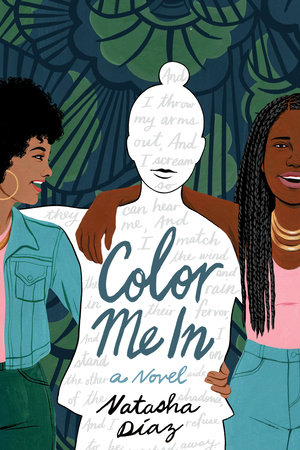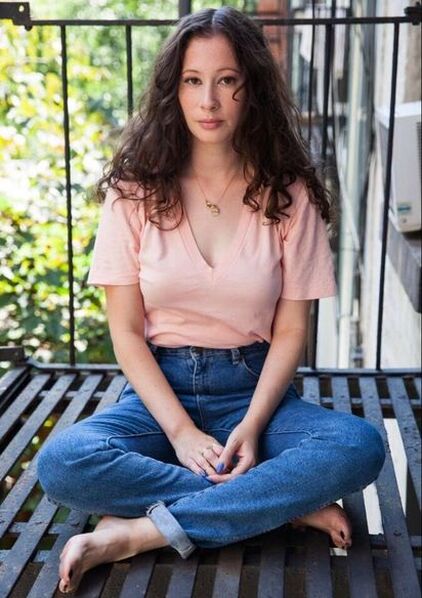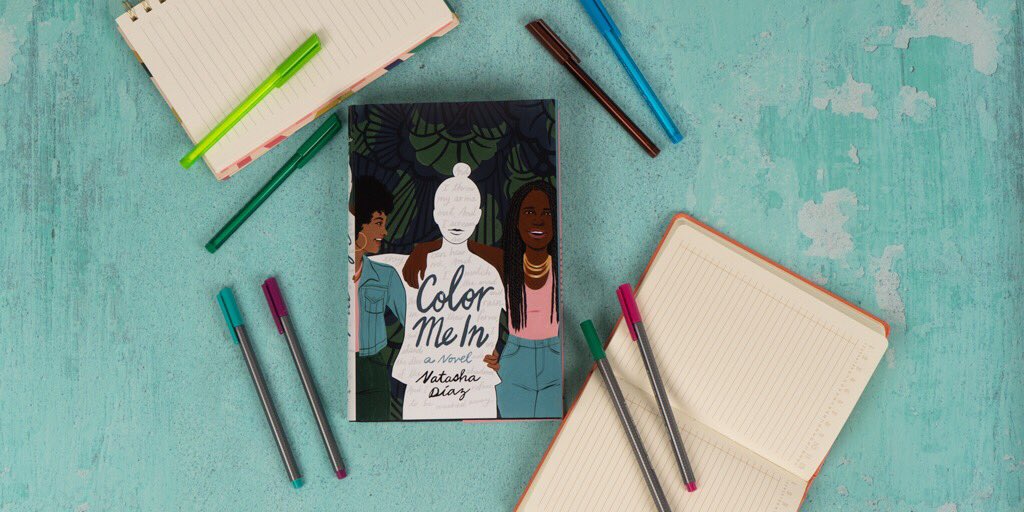|
It's an honor to introduce to Las Musas blog readers the gifted Natasha Díaz, freelance writer, producer, and screenwriter. Natasha has been a quarterfinalist in the Austin Film Festival and a finalist for both the NALIP Diverse Women in Media Fellowship and the Sundance Episodic Story Lab. Her personal essays have been published in the Establishment and the Huffington Post. On August 22nd, Delacorte Press releases her debut young adult novel COLOR ME IN! COLOR ME IN is a brave, poetic, engrossing coming-of-age and coming-to-wokeness story of 16-year-old Nevaeh Levitz who grew up in an affluent suburb in NYC disconnected to her biracial roots and unaware of her privilege. When her Black mom and Jewish dad split up, she relocates to her mom's family home in Harlem and is forced to confront her identity for the first time.
You Tweeted once that COLOR ME IN is your love letter to NYC. Can you discuss how your love of NY infuses the book? Aside from being multiracial, Jewish, and a woman, being born and raised in New York City is the next most defining thing about me. I’m sure many people feel this way about the place(s) they grew up, but being a New Yorker is something I take serious pride in. Being raised here gave me a lot of independence at an early age, as well as a no-nonsense, tough exterior. I learned real quick how to watch out for myself and move through the world with confidence, or at least, enough feigned confidence that people believed me enough not to mess with me too much. A lot of the transitions Nevaeh goes through in the book are about coming into herself and finding her voice, so I tried to put her in the middle of very New York moments and experiences to help aid in that growth. COLOR ME IN is not a memoir but the emotional depth of the novel feels very personal - how much did you draw from your own history and where did you draw the line? The book is mostly fiction, but I did pull a handful of my own experiences that I included in Nevaeh’s story and I was also inspired by people in my own life as I crafted some of the characters. In the beginning, it was hard to allow myself to stray from what I had gone through because I was worried it would mean the book was not authentic, but in truth, I needed to separate what I had lived through and what makes a good and engaging story. I did my best to explain in my authors note what was real life and what was fiction to give a reader a sense of my own experience. Your book deals with race in a nuanced way. Why was it important to you to write about white privilege and colorism? So often I find that narratives about biracial/multiracial characters deal with the internal struggle but rarely touch upon the privileges afforded to those of us who are also light-skinned or white presenting. In my experience, my white passing privilege is inherent to my multiracial identity, I can’t talk about one without the other because I experience my Blackness and my Brazilian-ness very differently than my cousins and mom and aunts and uncle as a result of how I look. It was important for me to fuse those two ideas into the message of Color Me In: that I have every right to be my whole self, while also not ignoring the differences and responsibility that come with my privilege. As a young person, I would have greatly benefited from a story like that, so I wanted to take the opportunity to write that book I never had growing up. There's a lot of beautiful poetry in COLOR ME IN. Have you written poetry before? If not how did you approach this and was it stressful? I have written poetry since I was little, it’s always been a medium that I felt comfortable expressing myself in, but I have also never done so professionally. There wasn’t any poetry in the first draft and like most first drafts, the book wasn’t working. When I decided to make Nevaeh a poet and to incorporate poetry into the book, it was scary because it was the first time I was putting poetry out into the world since my high school literary journal, but it also brought the story together, so I am glad I took the leap! What work went into creating the many dimensions of Nevaeh's intersectional identity? This is where I did pull a lot from my own experience. Even though Nevaeh and I were raised in very different environments, we both understand what it feels like to be pulled apart and unsure what we get to claim and own about ourselves. Rather than trying to gloss over that conversation, I tried to dig deep and really engage with that complicated existence of being a living, breathing grey area, to have multiple cultures that make you up and don’t fight against each other but actually work together to create a human being. Brandy Colbert said that COLOR ME IN has “warmth and humor, but never hides the ugly truths that can plague families — especially when they haven’t worked to understand each other’s differences.” How did you achieve this balance? Honestly, by trying to tell a story about real life and real people. Life is messy, people are messy, and lord knows families are messy. I tried not to be afraid to show peoples faults along with their strengths. I wanted these characters to speak their truths and as a result, be relatable to readers who may have different backgrounds or come from a different place but can still understand the frustrations and difficulties the people in the book are going through. How can COLOR ME IN support teens questioning their faith? Look, I’m not religious but I grew up around a lot of religion. I wish sometimes I had engaged more with my experience becoming a bat mitzvah, not because I think I would have decided to practice Judaism, but because there were lessons and opportunities for growth that I could have learned from that I rejected because I was an angsty teenager. I hope it encourages readers who maybe do feel a connection any religion to try to take pride in that and to know that they can engage with religion to whatever degree they feel comfortable with. You don’t have to be “all in” to have a relationship with faith, or you can be, and that’s also great too! How would you like educators to use COLOR ME IN in the classroom? I would love for it to be used in classrooms to open up conversations about privilege and the many ways it can manifest in people (and literature), whether it be from race or socioeconomic status or access to education or food or gender or sexuality. What teens would you especially like to read COLOR ME IN? How would you like to see them empowered by your work? I hope young people who have struggled with their mixed identity get a chance to see themselves on the page and feel empowered to take ownership of who they are and where they come from. I also want anyone who is searching for their voice or place in the world are able to find meaning and hope in Nevaeh’s journey. Lastly, I hope that white (including white presenting) teens are encouraged to learn to take responsibility for their privilege and power and to activate it to uplift communities who may not have the ability to do so because of the systemic prejudice the permeates American culture. More about the blog author...Raised in the Boogie Down Bronx, NoNieqa Ramos is an educator of over fifteen years, a literary activist, and a writer of picture books and young adult literature. She writes to amplify marginalized voices and to reclaim the lost history, mythology, and poetry of the Latinx community. Carolrhoda Labs release her debut novel THE DISTURBED GIRL'S DICTIONARY February 1st 2018. Her second novel, THE TRUTH IS will be released fall 2019. She is a passionate supporter of the #weneeddiversebooks and #ownvoices movement. NoNieqa lives with her soulmate, her beloved kiddos, and pet menagerie in Virginia. www.nonieqaramos.com
2 Comments
12/1/2019 10:12:51 pm
Hello! I just would like to give huge thumbs up for the great info you have here on this post. I will be coming back to your blog for more soon.
Reply
8/18/2023 02:47:27 am
I loved it! Very complete and easy to understand. Thank you for sharing that.
Reply
Leave a Reply. |
Las Musas SpeakWelcome to our blog! Archives
July 2024
Categories
All
|




 RSS Feed
RSS Feed